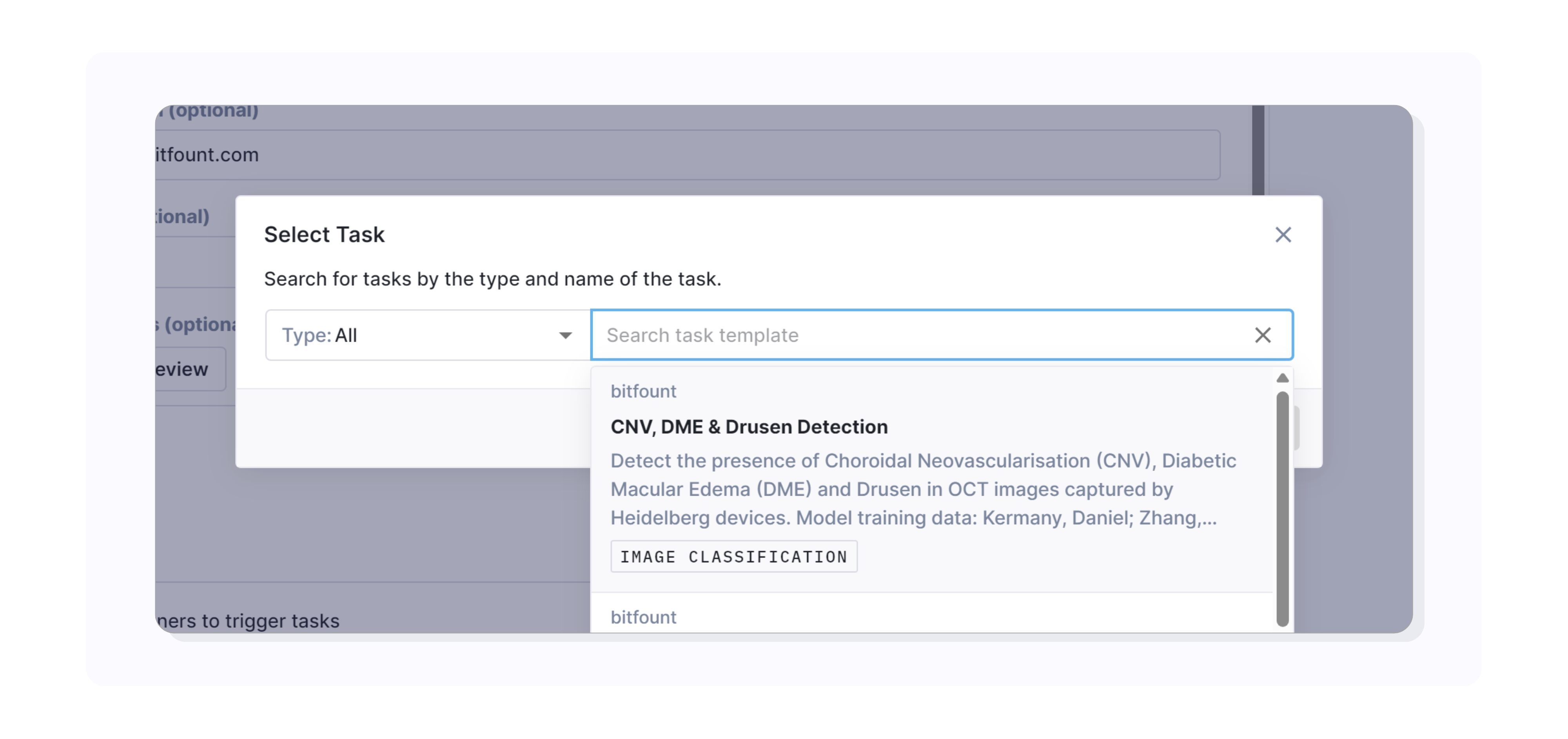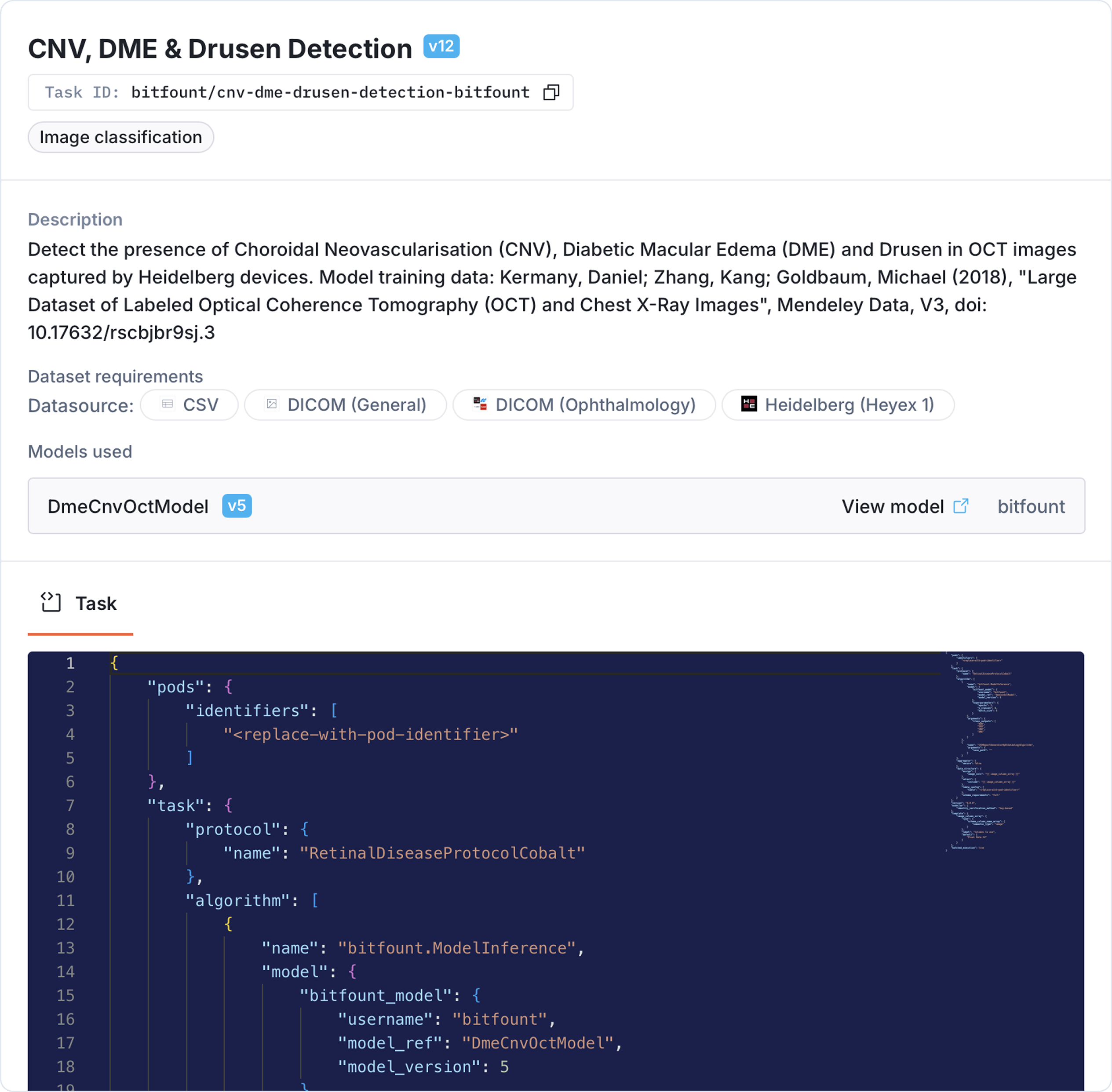Tasks
A Bitfount task is the brain of a project. It specifies the algorithm(s) that will run on any dataset linked to the project which can include the use of AI models as well as other data science operations.
Selecting a task
Available tasks can be viewed when clicking the Add task button within a
project, or by navigating to the Tasks tab. Bitfount hosts off-the-shelf tasks
that are provisioned in our demo projects, other users can also create their own
tasks for use in projects.

Inspecting a task
If you have been invited to join a project, a task will already have been added by the project owner. Before joining, you will be able to review the task configuration by clicking on the task card in the project. This will show details about the protocols, algorithms, and models that will run on your dataset.

Running a task
Tasks are run within projects to generate insights from your datasets.
How to run a task
- Navigate to the project and click
New task run. - Link a dataset that is compatible with the project's task.
- Add or adjust any required task parameters.
- Click
Run taskto begin processing.
Task completion time depends on dataset size, task complexity, and available computing resources.
Viewing results
Once the task run is complete, results can be accessed via the task run. Depending on the task, output formats may include CSV files, reports, or other structured data formats. For guidance on interpreting results, refer to your project lead or contact the Bitfount support team.
Task results are only accessible to the owner of the dataset and remain completely private. Bitfount does not have access to any results.
Creating a task
You can use our Python SDK to create tasks. If you're looking to build tasks and provision them on the Bitfount platform please see our SDK guides.